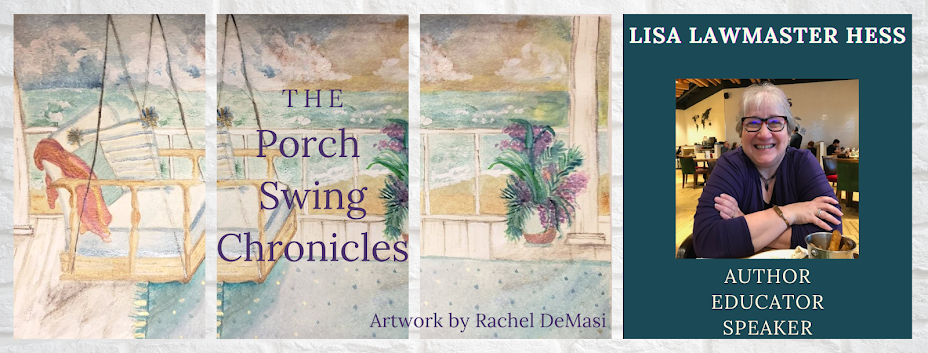It's the third Wednesday of the month, so it's critique group night. Right now, I have nothing to submit because my writing group has already read my work-in-progress, and it's in the hands of my beta readers. The feedback so far has been positive, but this trusted handful of readers has also found things I missed, ranging from typos, to repeated prose to eight characters whose names began with the letter D! Changing the names of the minor characters was easy enough. But finding choices that rang true for a few of the others was almost akin to renaming the family pet, making this post from 2020 feel like the perfect fit for today's Way Back Wednesday.
Because beauty is in the eye of the beholder (welcome to cliché day on the porch swing). All kidding (and clichés) aside, we writers are often unable to be objective about our own work. We have favorite pens, favorite words and an affinity for particular combinations in our own work (and sometimes in that of others, too). Often, it takes an objective eye to catch the fact that something's got to go.
This happens for many writers in the revision process but, if we're really lucky, we have critique group members and beta readers who highlight these things before we get to that point. As I was working on the final revisions for Courting Peace, I came across the description below. To put it in context, Angel was sitting in the parking lot of her church, glancing around for a distraction.
"The bell tower was a consistent source of discussion among the congregation. Physically, it was still in good repair, beautifully beckoning potential congregants from miles away.
But mellifluous it wasn’t. Over time, the bells had fallen out of tune, and the discussion over replacing them had been heated. The bells had been part of the church since it had been built over a century ago, and not everyone viewed their replacement as progress. Pastor after pastor had avoided controversy by ensuring that the bell tower itself was safe, then channeling funds to more popular projects, while the bells’ pitch grew flatter and flatter. Last year, the music ministry had held a raffle to raise money to repair or replace the bells but, even with some money set aside, no plan that pleased everyone was yet in sight."The writing is okay. Angel being in her head is okay.
 |
And so, last weekend, when I came to that section, I cut it. Anne's gentle suggestion that the prose might be better without it was right on target.
Killing our darlings is hard (thus the cringe-worthiness of the phrase) but, in the end, doing so makes our work better, tighter, and clearer.
One more reason to love my critique group. Thanks, Anne. You were right.










